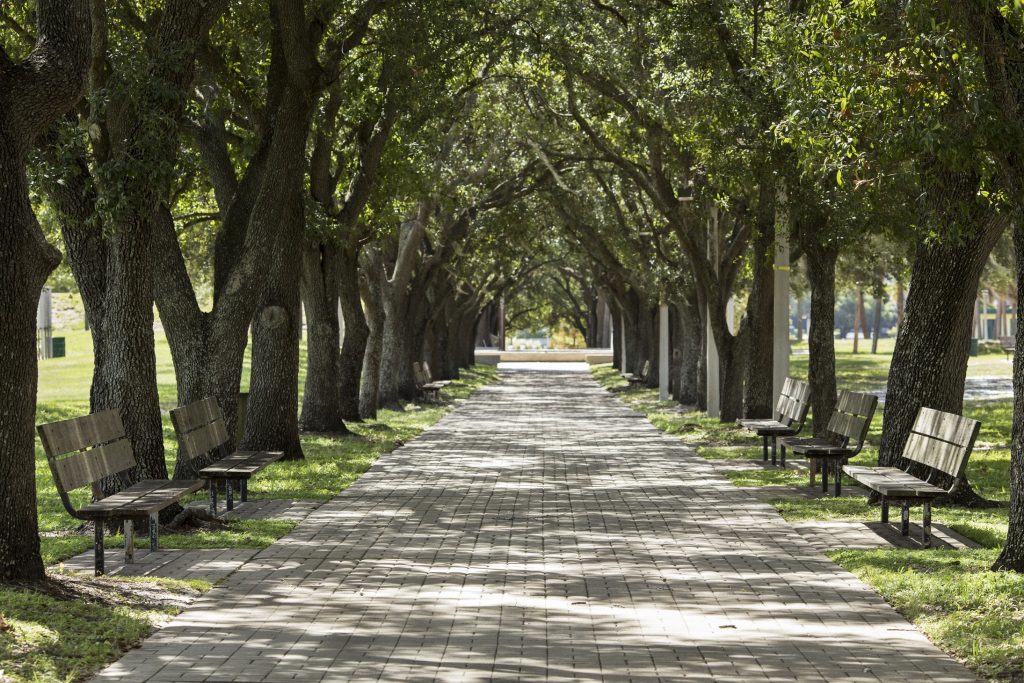
November 12, 2020
By: Brad Buck, 352-875-2641 (cell); bradbuck@ufl.edu
Trees give us shade to cool off and oxygen to breathe – and they provide Florida cities with $4 billion in benefits a year, collectively, UF/IFAS researchers say.
These include savings in air pollution removal, stormwater runoff and carbon sequestration and storage, said Andrew Koeser, UF/IFAS associate professor of environmental horticulture.
To reach their findings, UF/IFAS researchers surveyed tree canopies in Florida’s metropolitan and micropolitan areas, defined as distinct economic regions having one or more core cities. Florida has 29 such regions, spread out over 51 of its 67 counties. Scientists define tree canopy cover as the percent of a land area covered by leaves and branches when viewed from above.
“Florida is known for its natural resources and beauty, and its urban forests are the most direct connection to nature most of the state’s residents have,” Koeser said. “As such, this work is an important first step in monitoring and valuing some of the many things trees do to enhance our lives.”
Koeser and several UF/IFAS colleagues put their assessment into a new UF/IFAS Extension document, in which they outline the many ways urban canopy gives back quantifiable benefits.
To calculate these benefits, UF/IFAS researchers used software known as the iTree Canopy Model from the U.S. Forest Service. The iTree is a common model that governments worldwide use to put a value on their urban trees, said Koeser, a faculty member at the UF/IFAS Gulf Coast Research and Education Center in Balm (Hillsborough County), Florida.
This report is part of a statewide urban canopy assessment funded by the Florida Forest Service and the UF/IFAS Center for Land Use Efficiency (CLUE), and this is the first time anyone has applied the iTree model to get a statewide assessment of the benefits of urban trees.
In the past, UF/IFAS faculty have written similar documents for individual cities like Tampa, Orlando, Fort Lauderdale and one for Miami-Dade County.
“These numbers are broad estimates meant to give folks an idea of the magnitude of the benefits,” Koeser said. “It is an attempt to quantify urban green infrastructure in a way that is comparable to roads, fire truck fleets and other things that cost money and produce benefits.”









